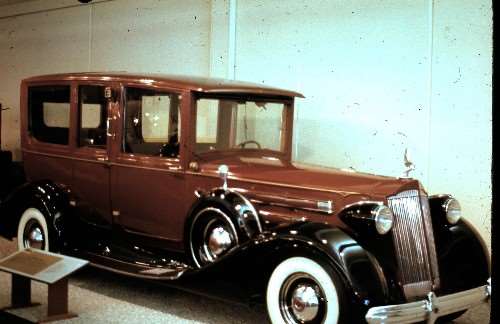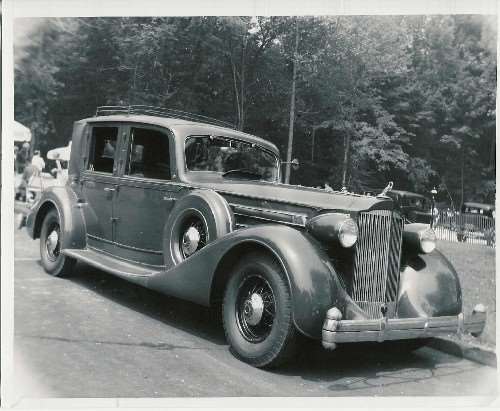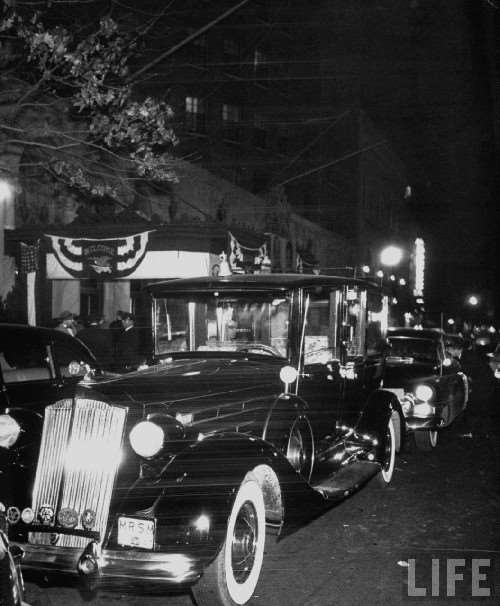|
Re: Re-bodied ?
|
||||
|---|---|---|---|---|
|
Forum Ambassador
|
It must have happened on a fairly routine basis. Here is a note from a 44 service letter on the subject. Understandable during the war years but If you look back thru early 30's issues there are even more. Some just announce a body available, others mention the type and condition etc.
As to the value, others will have a better idea but it does seem to be a semi-sanctioned undertaking. Attach file:  (14.91 KB) (14.91 KB)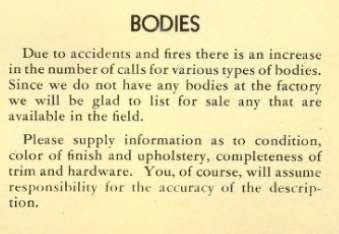
Posted on: 2012/12/30 11:11
|
|||
|
Howard
|
||||
|
||||
|
Re: Re-bodied ?
|
||||
|---|---|---|---|---|
|
Forum Ambassador

|
A complex question. How much rebodying might affect the value of a car depends very much on the rarity of the car, the maker of the replacement body and the time at which the rebodying was done, the documentation available on the rebodying, and more. It of course also depends on the buyer's attitude toward an altered car.
For example, rebodying a 1934 Twelve couple with a 1934 Twelve convertible coupe body, done in contemporary times solely for the purpose of increasing the value, would be a value decreaser to most potential buyers. But if the rebodying was done by a Packard dealer back in the 30s and you had documentation, it would have a far lesser impact, perhaps no impact, and perhaps would even increase value significantly. Again, just using 1934 as an example, if you had a Twelve 1108 sedan in poor condition and fitted a new Roxas replica body of a LeBaron phaeton, you'd probably increase the value by a very large multiple, maybe 10X - but likewise a very large amount of money would have gone into the conversion. There are some well-know examples of cars that were rebodied soley to meet owner's whims and without any factory connection, for example the 37 Packard Twelve with an RR/Brewster body mounted for Barbara Hutton or another 37 Twelve with an earlier Piece-Arrow body done for another famous personage (Ms.Ruth Gordon of CT) - these cars have high values because of their unique history and the persons who commissioned the work. Photos of both enclosed. I think you have to evaluate each individual rebodied car for it's own particular merits to make a judgement about whether value was increased or decreased, there is no stock answer to fit all situations.
Posted on: 2012/12/30 11:39
|
|||
|
||||
|
Re: Re-bodied ?
|
||||
|---|---|---|---|---|
|
Home away from home
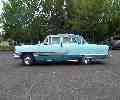
|
For me the "Hutton Special" sort of passes muster but the first picture with I guess the Pierce-Arrow transplant.....
Must have looked great on a late teens early twenties Pierce but Yikes! To the list of things that money can't buy I guess will have to add "Good Taste"!
Posted on: 2012/12/30 18:35
|
|||
|
1951 200 Deluxe Touring Sedan
1951 200 Deluxe Touring Sedan (parts ?) 1951 Patrician Touring Sedan 1955 Patrician Touring Sedan |
||||
|
||||
|
Re: Re-bodied ?
|
||||
|---|---|---|---|---|
|
Home away from home

|
In the forties, fifties and into the sixties open cars were the only desirable antiques and closed cars were nothing. Many good sedans and limousines were scrapped to provide parts for roadsters and tourings, or had their bodies replaced by open bodies taken from other cars. An extreme example was a 20s Rolls Royce that had a touring body taken from a Franklin. This won a prize at Pebble Beach in 1955 or 56.
Posted on: 2012/12/30 21:45
|
|||
|
||||
|
Re: Re-bodied ?
|
||||
|---|---|---|---|---|
|
Home away from home

|
Is that rebodied '37 Tweleve the same one that was sold at Hershey this year?
rmauctions.com/CarDetails.cfm?SaleCode=HF12&CarID=r124&Currency=USD Regardless, I quite like its odd look, and I see that the Hershey one went for a relative bargain, especially in regards to its provenance and pre-auction estimate. I'm sorry I didn't get to see it at the lodge.
Posted on: 2012/12/30 22:15
|
|||
|
[color=0099FF]Respectfully,
|
||||
|
||||
|
Re: Re-bodied ?
|
||||
|---|---|---|---|---|
|
Forum Ambassador

|
Yes, same one. It was most recently in the O'Quinn collection in Texas when it was painted that horrible color. Many years before that it was in the Petit Jean/Winthrop Rockefeller Museum down in the Ozarks and owned by Jimmy Melton before that. Here's another well-known picture of the car, I've been told the event was the inauguration of Dwight Eisenhower and President though that would be at the time Melton owned it.
The photo I posted above in post #3 was taken by me when it was in the Petit Jean Museum down in AK, photo taken in the late 60s or early 70s.
Posted on: 2012/12/30 23:55
|
|||
|
||||
|
Re: Re-bodied ?
|
||||
|---|---|---|---|---|
|
Quite a regular
|
Can some one tell me how to go about identifying a body maker. I read and follow this site trying to learn more about Packards and just do not know what to look for and how to tell. I have a 29 633 7pass that i am working on and a 37 1506 5 pass needing a left front fender to begin a full restoration.
My 29 has some turn signal indicators under the sun visor that appear to be vaccuum operated and slide out. Can some one tell me about these.
Posted on: 2013/1/8 16:11
|
|||
|
||||
|
Re: Re-bodied ?
|
||||
|---|---|---|---|---|
|
Forum Ambassador

|
The topic of body makers isn't a short or easy one, far too large a topic for a simple response, but there are many very excellent books available on the topic. The first thing to do is to note that there were many mass volume body makers whose stock in trade was to build large numbers of "standard" bodies for car manufacturers, such as Pullman and Briggs who built for Packard at various times, Hayes who built for Peerless and occasionally for Chrysler in later years, Fisher Bros. for GM, Seaman for Nash, and on and on. Over the years there were perhaps half a hundred such companies. Franklin didn't generally build their own bodies, nor did Stutz in later years. These nominally "factory" bodies normally don't carry any identification as to maker. You'd have to become a very serious student of the industry to wrap yourself around this topic.
Then as a separate cateogy of body builders there were the custom coachwork houses, Dietrich, LeBaron, Brwester, Locke, Derham, Murphy, Holbrook, Willoughby and many others who made small series of custom bodies for individual luxury car makers, and one-off creations based on individual buyer's tastes. Most of these bodies carry identification badges; these are often on the lower right side of the cowl between the hood and the front door, though at times they are on the sill plates or other locations. To add confusion there were bodies built and tagged as Dietrich which were actually built by Murray, just to name one such example. Unless your two cars have such special coachwork, the bodies for your 633 and 1506 were built by Packard themselves. There is an excellent website on the custom coachwork body builders as well as some of the "volume" speciality builders. Seecoachbuilt.com If your interest is limited to Packard coachwork, you might go to the "Bookshelf" on the site and take note of Hugo Pfau's book "The Coachbuild Packard" - probably long out of print but copies surface from time to time. Another superb work on the subject is also by Pfau who writes from first hand experience in the industry, "The Custom Body Era". there are also harder to find books on the Swedish, English, German, and other overseas coachbuilders. A picture of your turn signal device would be most interesting, devices like you describe are most often found on European makes, sometimes called wig-wags or semaphores. It also may be some sort of aftermarket gadget.
Posted on: 2013/1/8 16:33
|
|||
|
||||
|
Re: Re-bodied ?
|
||||
|---|---|---|---|---|
|
Quite a regular
|
Mr O D
Thanks for your reply and info, I will look up the information you shared. I am going to try and attach a folder of pics of my 29 with the turn signal indicators. My car is typical left hand drive as standard in the USA so I am still hoping you can help me.
Posted on: 2013/1/8 17:25
|
|||
|
||||

